As an enthusiast of all things aquatic, I find the humble goldfish (Carassius auratus) to be a delightful subject. These iconic creatures have been adding a splash of vibrant color and charm to our homes for centuries. The allure of goldfish extends far beyond their glimmering scales; it lies in their rich history, diverse species, and fascinating behavior.
Belonging to the Cyprinidae family, the goldfish shares its roots with carp and minnows. You might be surprised to learn that there are numerous types of goldfish. From the common goldfish to more exotic varieties like the Lionhead and Oranda, each brings a unique beauty to the table. Their shimmering colors, which range from classic gold to hues of red, orange, black, and even blue, make each species an art piece in itself.
Goldfish are amiable dwellers in the watery realms they inhabit. Unlike the solitary predators of the deep, they’re quite the social butterflies (or should I say, social guppies?). They’re happiest when they have company, making them an ideal choice for multi-fish aquariums. However, you might notice them getting a bit territorial during the breeding season – that’s just their way of playing house.
When it comes to their diet, goldfish aren’t picky eaters. They’re omnivorous by nature, happily munching on small crustaceans, insects, and plant matter in the wild. In our homes, they’re content with specially formulated flakes or pellets, and they won’t say no to occasional fresh or frozen treats.
Behaviorally, goldfish are quite intriguing. They’re far more intelligent than we often give them credit for, capable of recognizing their owners and associating them with feeding time. Forget the myth about their three-second memory; these little swimmers have a memory span that lasts months.
The natural habitat of goldfish is as varied as their species and colors. Originally from East Asia, these sturdy explorers have made themselves at home in different corners of the world, thriving in both still and slow-moving freshwaters. Whether it’s a temperate pond or a tropical aquarium, as long as the conditions are right, goldfish will happily settle in.
The world of goldfish is teeming with surprising facts and fun trivia. Did you know that the gold color of goldfish was a rare genetic mutation that breeders favored? Or that the world record for the longest goldfish is held by a goldfish named “Bruce”? And how about their history? Goldfish have been adored as pets since the Tang Dynasty in China – now that’s a long-standing fan club!
As we dive deeper into the world of goldfish, I invite you to join me on this journey. With the right care and knowledge, you too can experience the joy of sharing your home with these delightful aquatic companions.
Table of Contents
Understanding the Price of Goldfish
The price of a goldfish can vary widely depending on several factors such as the breed, size, color, and where you buy it. As a general rule, common goldfish types like the Comet or Shubunkin are usually quite affordable, with prices often starting at just a few dollars each.
On the other hand, more exotic or fancy goldfish breeds such as the Oranda, Ranchu, or Lionhead can be significantly more expensive. These can range from around $10 to over $100 for specially bred or particularly beautiful specimens.
Remember that the initial cost of the goldfish itself is just the beginning. You’ll also need to consider the costs of a suitable tank or pond, filtration system, food, and ongoing care.
The Common Names of Goldfish
Goldfish come in a wide variety of breeds, each with their unique characteristics, and often, their own alternative names. Here are some of the most popular goldfish types and their common names:
Common Goldfish
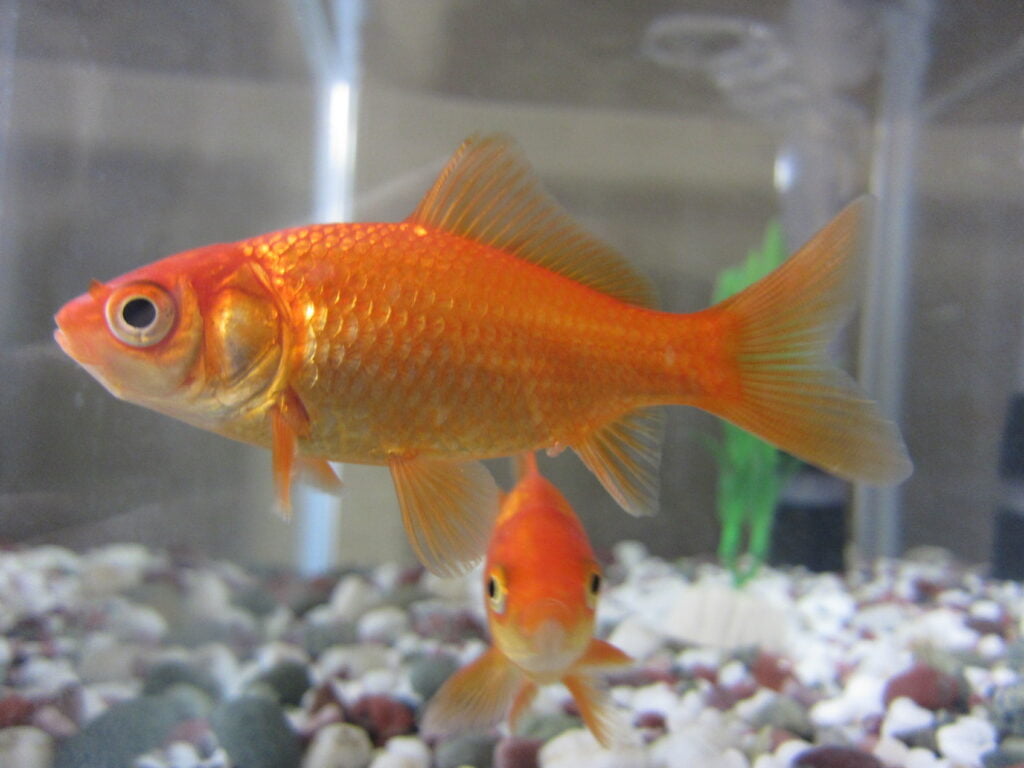
Often just referred to as the “goldfish,” this is the most basic and hardy variety. It lacks the fancy fins or body shapes of other breeds but is a popular and robust choice for beginners.
Comet Goldfish
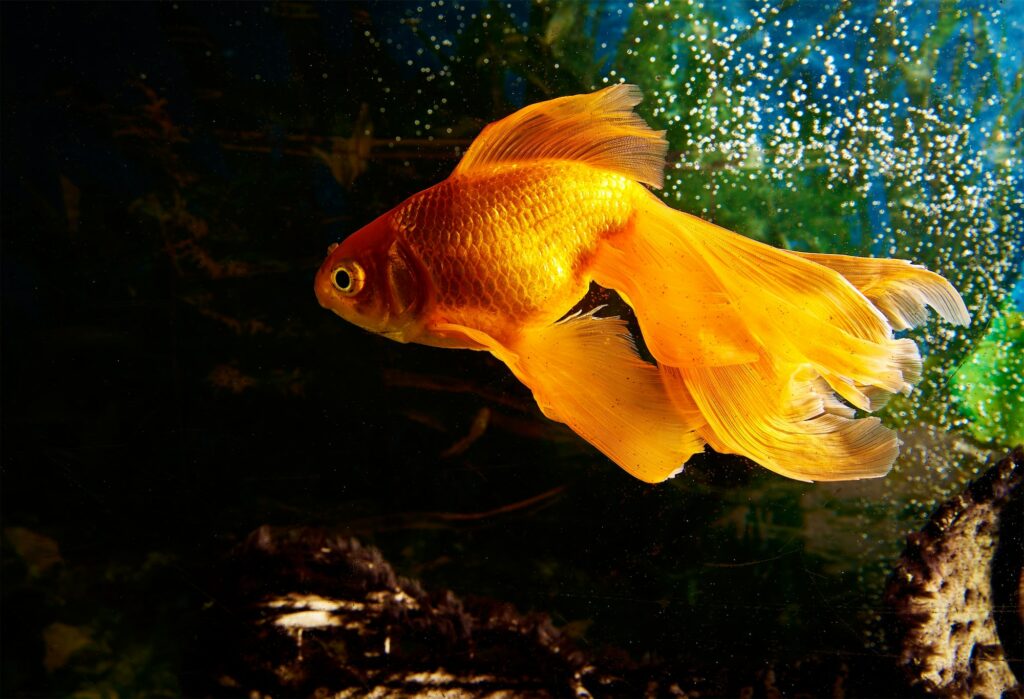
Sometimes called the “Sarasa comet” when it has a red-and-white coloration.
Fantail Goldfish
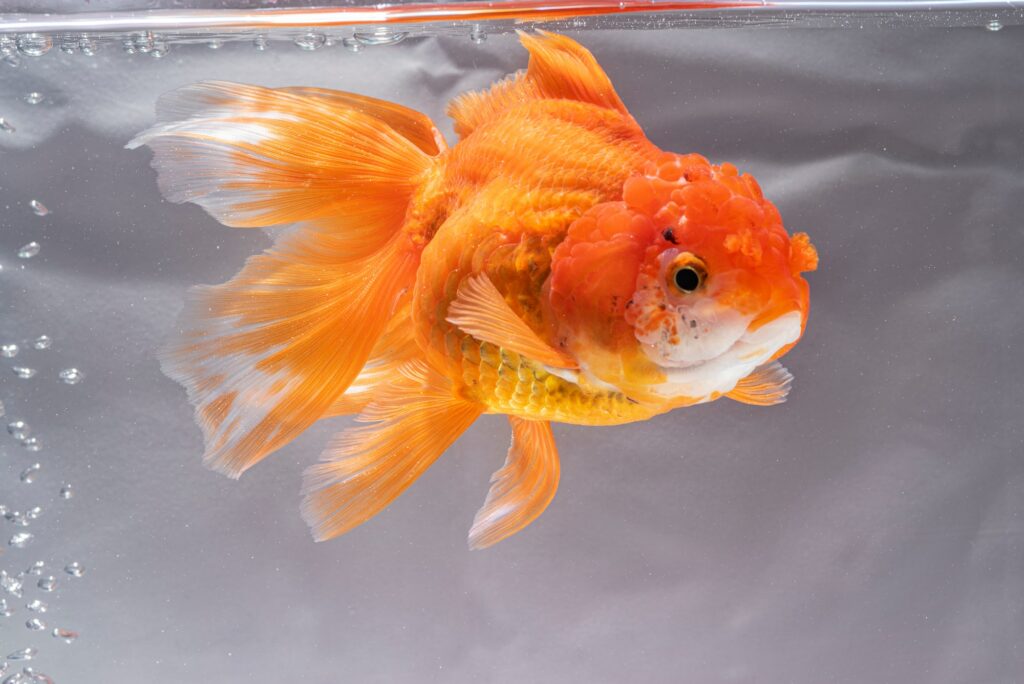
Known for its distinctive split tail fin, the fantail goldfish is a popular variety for aquariums.
Oranda Goldfish
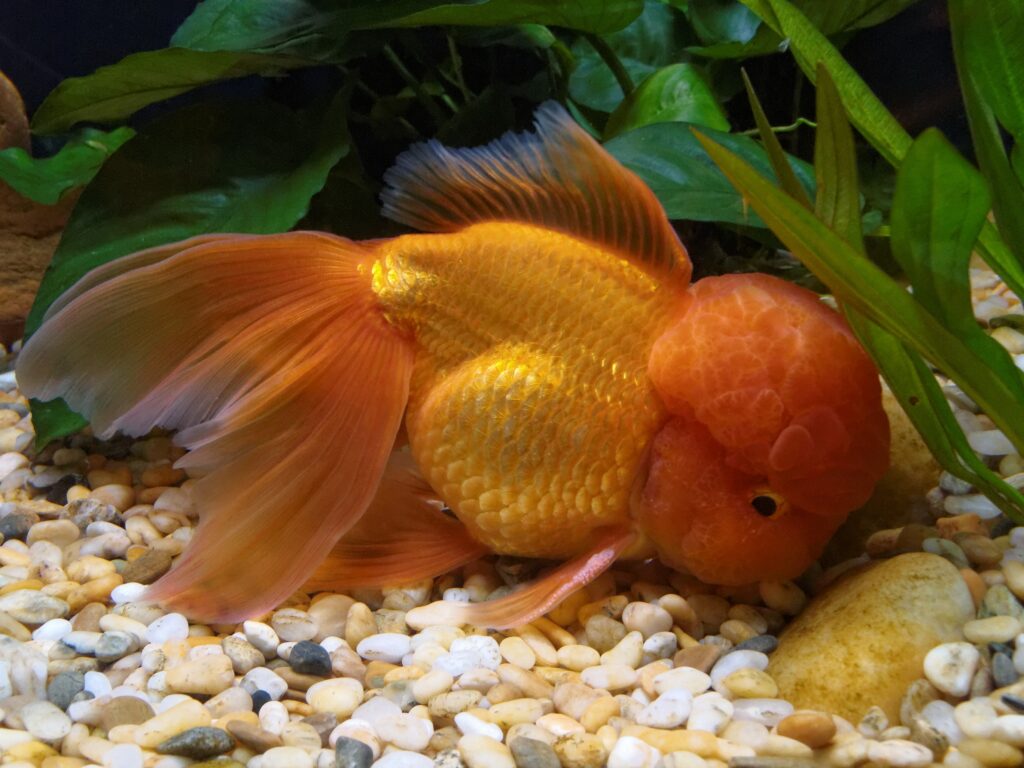
Recognizable by their ‘wen’ or head growth, Oranda goldfish are sometimes referred to based on their color, like the “Red Cap Oranda” which has a red wen and a white body.
Ryukin Goldfish
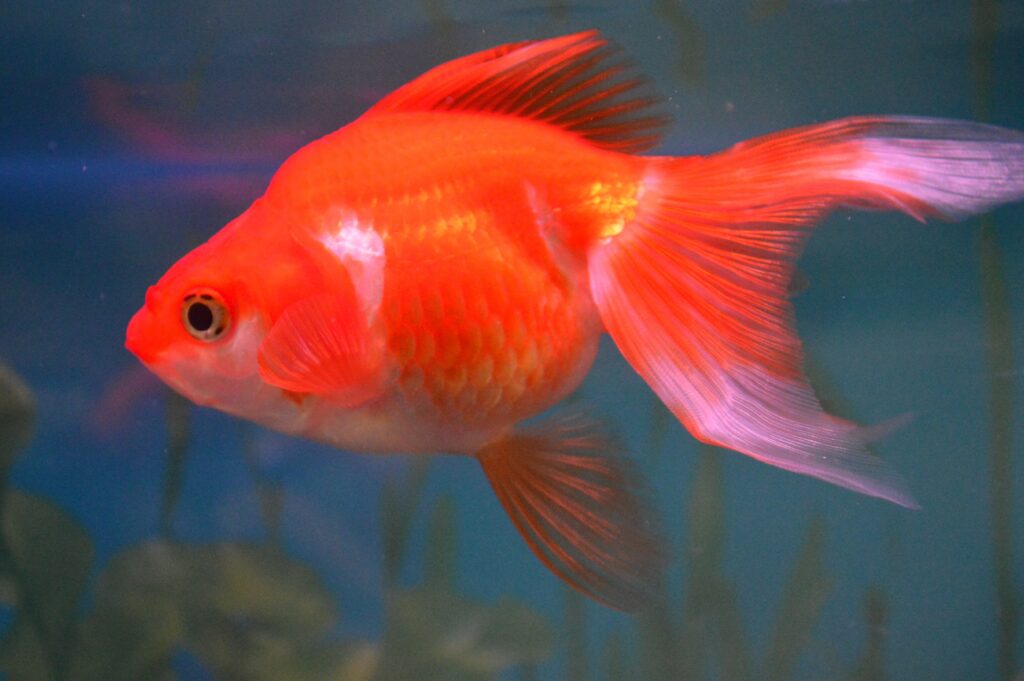
These goldfish have a large hump behind their head and are often named by their color and fin type, like the “Red and White Ryukin” or “Longfin Ryukin.”
Lionhead Goldfish
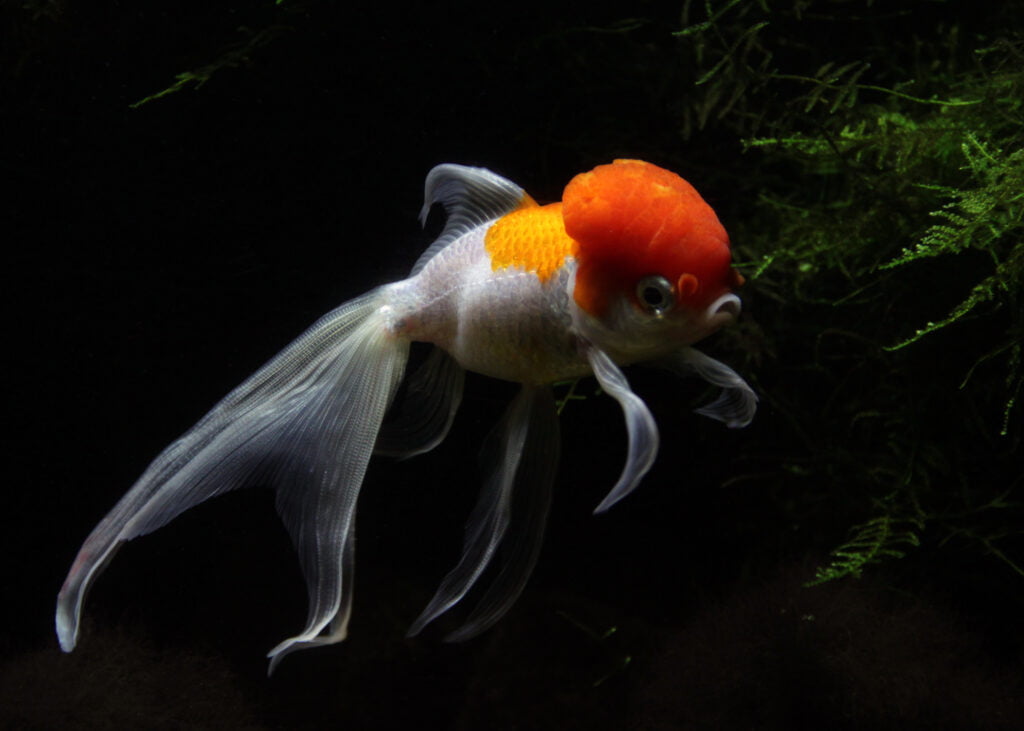
Named for their lack of a dorsal fin and a large wen, they’re also known as “Ranchu” in Japan, although slight differences exist between the two.
Black Moor Goldfish

These goldfish have a black coloration, telescope eyes, and a fancy tail. They are sometimes simply called “moors” or “black moors.”
Bubble Eye Goldfish
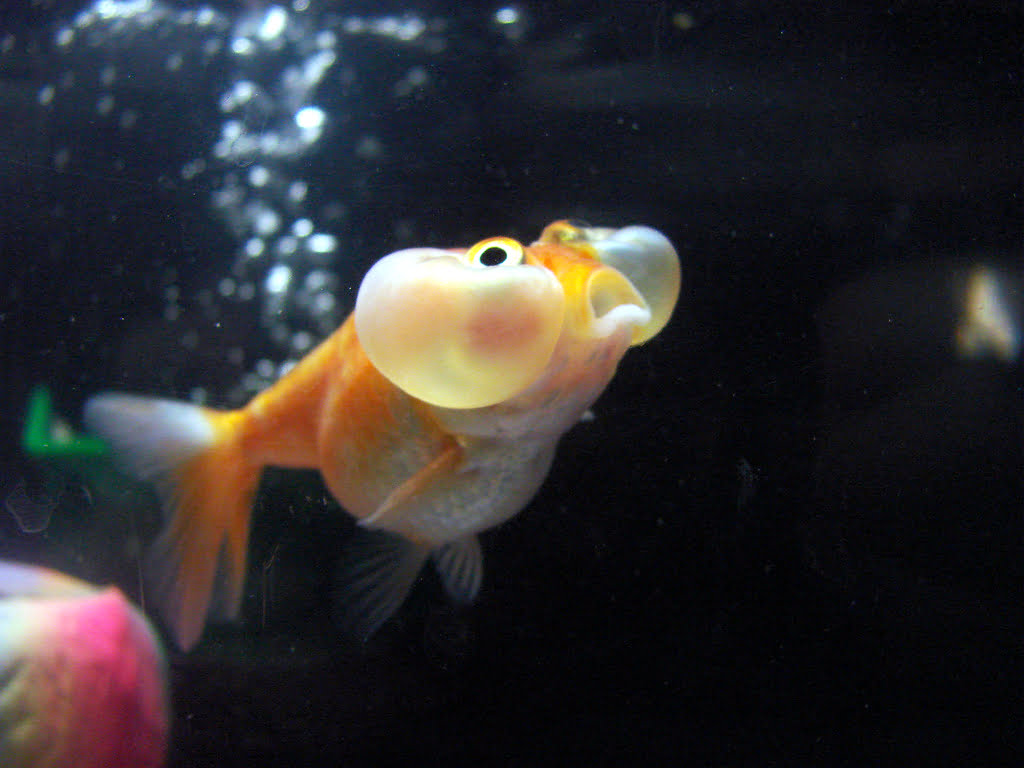
Known for their large fluid-filled sacs under their eyes, they are often just called “bubble eyes.”
Goldfish Care: Ideal Tank Size
When it comes to housing goldfish, one of the most common misconceptions is that they can thrive in small bowls. This couldn’t be further from the truth. Goldfish are active swimmers and can grow quite large, depending on their species. Hence, they need plenty of space to swim and explore.
For a single common or comet goldfish, you’ll want a tank that’s at least 55-75 gallons as these types can grow up to 12 inches or more. If you’re planning on having more than one, you’ll need to add an additional 20-30 gallons per fish.
Fancy goldfish, which usually don’t grow as large, can be kept in a slightly smaller tank. A single fancy goldfish should have a tank of at least 20-30 gallons, with an additional 10-20 gallons for each additional fish.
Remember, these are minimum requirements. Goldfish will always appreciate more space, so go for the largest tank you can afford and have room for.
Water Parameters for Goldfish
Goldfish aren’t tropical fish, so they prefer cooler water temperatures between 65-75 degrees Fahrenheit (18-24 degrees Celsius). Sudden changes in temperature can be stressful for goldfish, so try to keep it stable.
As for pH, goldfish can tolerate a relatively wide range, but a slightly alkaline pH of 7.2-7.6 is ideal. Regular testing and water changes can help keep the pH stable.
Goldfish produce a lot of waste, so good filtration is crucial. You’ll want a filter that can handle at least 10 times the volume of your tank per hour. For example, a 20-gallon tank would need a filter rated for at least 200 gallons per hour.
Ammonia and nitrite levels should always be zero, and nitrate should be kept below 20 ppm. Regular water changes (about 25-50% per week) can help keep these parameters in check.
Also, goldfish prefer softer water, so the general hardness (dGH) should ideally be kept below 12.
Always cycle your tank before adding your goldfish to establish a healthy bacterial colony that can process fish waste. And don’t forget to dechlorinate tap water before using it in your tank!
The Lifespan of Goldfish: Expectations vs. Reality
When properly cared for, goldfish are remarkably long-lived creatures. The average lifespan of a goldfish kept in a well-maintained, spacious tank is often around 10-15 years. However, it’s not uncommon for some individuals, particularly common or comet goldfish, to reach 20 years or more. The oldest recorded goldfish, a fancy goldfish named Tish, lived to be an impressive 43 years old!
Unfortunately, many goldfish do not reach their full lifespan due to inadequate care. Goldfish kept in small bowls, overstocked tanks, or in poor water conditions often suffer from health problems and have significantly shorter lifespans.
Full Size of Goldfish: Expectations vs. Reality
Goldfish size is another area where expectations often don’t align with reality. Many people picture goldfish as small creatures due to frequently seeing them in small bowls or tanks. However, given enough space and proper care, goldfish can grow quite large.
Common goldfish and comet goldfish, the types often seen in ponds, can easily reach 10-12 inches or more in length. Some specimens have even been known to reach up to 18 inches!
Fancy goldfish, with their rounder bodies and elaborate fins, are generally smaller but can still reach sizes of 6-8 inches or more depending on the breed.
A goldfish’s environment plays a significant role in determining its growth. Inadequate space can stunt a goldfish’s growth, leading to health problems. It’s always best to provide your goldfish with a spacious tank or pond to allow them to reach their full size and potential.
Goldfish’s Natural Environment and Habitat Preference
Goldfish originate from East Asia, where they lived in slow-moving and stagnant waters like ponds, lakes, and rivers. These environments were rich in vegetation and had a muddy bottom, offering plenty of hiding spots and food sources.
In terms of water conditions, goldfish prefer cooler, slightly alkaline water, with a pH between 7.2 and 7.6. They can tolerate a range of temperatures, but a consistent temperature between 65-75 degrees Fahrenheit (18-24 degrees Celsius) is ideal.
Goldfish Behavior
Goldfish are social creatures and enjoy the company of their own kind. They’re also diurnal, meaning they are active during the day and rest at night.
One of the most endearing traits of goldfish is their curiosity. They love to explore their surroundings and will often be seen rooting around in the substrate of their tank in search of food. Goldfish also have a surprisingly good memory for fish and can recognize their owners and even learn simple tricks!
Aquarium Decoration Ideas for Goldfish
When setting up a goldfish tank, the goal is to mimic their natural environment as closely as possible. Here are a few decoration ideas:
- Substrate: Opt for a soft, sandy substrate. Goldfish enjoy foraging on the tank floor, and a sand substrate can prevent them from injuring themselves, which can be a risk with sharp gravel.
- Plants: Live plants not only provide hiding spots but also help improve water quality by absorbing nitrates. Goldfish are known for being a bit rough with plants, so opt for hardy species like Java fern or Anubias that can withstand their attention.
- Rocks and Driftwood: These can provide additional hiding spots and visual interest. Just make sure there are no sharp edges that could injure your goldfish.
- Open Swimming Space: Make sure to leave plenty of open swimming space for your goldfish. They are active swimmers and will appreciate the room to roam.
- Avoid Sharp or Small Decorations: Goldfish can be clumsy swimmers, so avoid any decorations with sharp edges that could potentially injure them. Also, avoid any decoration that is small enough for a goldfish to swallow.
While it’s important to make your tank visually appealing, the safety and comfort of your goldfish should always be the priority.
Creating a Community: A List of Suitable Tank Mates for Goldfish
Goldfish are generally peaceful and sociable fish, making them great candidates for a community tank setup. However, their tank mates must be carefully chosen to ensure compatibility. Factors such as temperament, size, and environmental needs must be taken into account.
Here is a list of potential tank mates that are often a good match for goldfish:
- Other Goldfish: Different varieties of goldfish usually get along well together, as long as they have similar care requirements.
- White Cloud Mountain Minnows: These fish are cold water tolerant and can live harmoniously with goldfish. They are fast swimmers and can avoid the goldfish if needed.
- Zebra Danios: Zebra Danios are active swimmers and can coexist with goldfish. They prefer similar water conditions.
- Rosy Barbs: Rosy Barbs are active and can hold their own against a goldfish. They are also quite hardy.
- Weather Loaches: Weather Loaches are bottom dwellers like goldfish, but they are peaceful and can defend themselves if needed.
- Bristlenose Plecos: Bristlenose plecos are peaceful bottom dwellers. They are larger than goldfish but will not bother them.
- Rubbernose Plecos: Rubbernose plecos are peaceful bottom dwellers. They are larger than goldfish but will not bother them.
- Apple Snails: Apple snails are peaceful and excellent at cleaning the tank. They will not bother the goldfish.
- Ghost Shrimp: Ghost shrimp are peaceful, small, and will help clean the tank. They can coexist with goldfish without issues.
- Dojo Loaches: Dojo loaches are peaceful bottom dwellers. They are larger than goldfish but will not bother them.
- Koi: Koi are larger than goldfish but are peaceful and can coexist with them in a large enough pond.
- Platies: Platies are peaceful and can hold their own against a goldfish. They also prefer similar water conditions.
- Mollies: Mollies are large enough to defend themselves and fast enough to avoid the goldfish.
- Swordtails: Swordtails are large enough to defend themselves and fast enough to avoid the goldfish.
- Corydoras Catfish: Corydoras are bottom dwellers and can hold their own against a goldfish. They also help clean the tank.
- Guppies: Guppies are small, peaceful fish that can live harmoniously with goldfish. However, avoid fancy guppies as their bright colors and long fins might provoke the goldfish.
- Bamboo Shrimp: Bamboo shrimp are peaceful, large, and will help clean the tank. They can coexist with goldfish without issues.
- Nerite Snails: Nerite snails are peaceful and excellent at cleaning the tank. They will not bother the goldfish.
- Mystery Snails: Mystery snails are larger than nerite snails but are still peaceful and good at cleaning the tank.
- Ryukin Goldfish: Ryukin goldfish are a variety of goldfish that can live harmoniously with other goldfish.
Individual fish may have individual behaviors, so monitor any new additions for signs of aggression or stress. Also, any new tank mates should be quarantined before introducing them to the main tank to prevent the spread of diseases. It’s crucial to ensure that the tank is large enough to support additional fish and that the filtration system can handle the extra bioload.
Goldfish Breeding Tips: A Step-by-Step Guide
Breeding goldfish can be a fascinating and rewarding experience, but it requires preparation and attention to detail. Here’s a step-by-step guide to help you through the process:
- Sexing Your Goldfish: The first step in breeding goldfish is to identify their sex. Males usually have slimmer bodies and develop small white bumps, called tubercles, on their gills and pectoral fins during the breeding season. Females tend to have a rounder body and a more noticeable vent.
- Conditioning Your Goldfish: This involves feeding your goldfish a high-quality, varied diet to prepare them for breeding. Foods like brine shrimp, daphnia, and fresh veggies can be excellent choices.
- Setting Up the Breeding Tank: The breeding tank should be spacious (at least 20 gallons) and have a slightly higher temperature (about 70-75 degrees Fahrenheit) to encourage spawning. Adding spawning mops or fine-leaved plants can provide a place for the female to deposit her eggs.
- Inducing Spawning: You can simulate the change from winter to spring to induce spawning. Start by lowering the temperature and then gradually raising it.
- Spawning: During spawning, the male will chase the female around the tank and nudge her sides. This prompts the female to release her eggs, which the male will then fertilize. This can take several hours.
- Post-Spawn Care: After spawning, remove the parents from the tank to prevent them from eating the eggs. The eggs will hatch in 4-7 days, depending on the temperature.
- Feeding the Fry: Once the fry starts swimming, you can start feeding them. Infusoria, liquid fry food, and finely crushed goldfish flakes are good options.
- Growing Out the Fry: As the fry grows, it will need more space, so be prepared to move them to a larger tank.
Goldfish breeding can take patience and several tries, so don’t be discouraged if it doesn’t happen right away. Always ensure to provide the best care possible for both the parents and the fry.
From their fascinating history and vibrant colors to their unique behaviors and social nature, it’s no surprise that goldfish have endeared themselves to aquarium enthusiasts around the world. These gentle creatures, with their easy-going temperament and hardy nature, are a joy to care for, offering both beginners and experienced aquarists a rewarding experience.
Always remember that like all pets, goldfish rely on their owners for their well-being. Providing them with a suitable environment, a well-balanced diet, and regular care is fundamental to their health and happiness. With the right care, these charming creatures will continue to delight and mesmerize you for many years to come. Enjoy the wonderful journey of goldfish keeping!
FAQs
How many goldfish can I put in my tank?
A common rule of thumb is 20 gallons for the first goldfish and 10 gallons for each additional one. This rule is mainly applicable to fancy goldfish, which tend to be smaller. If you have common or comet goldfish, which can grow much larger, it’s recommended to have even more space.
How often should I feed my goldfish?
Goldfish should typically be fed 2-3 times a day. Only feed them as much as they can consume in about two minutes. Overfeeding can lead to poor water quality and health problems.
How do I maintain the water quality in my tank?
Regular water changes (about 25-50% weekly) are key to maintaining good water quality. You should also monitor water parameters (like temperature, pH, and levels of ammonia, nitrite, and nitrate) regularly. A good filtration system is also crucial.
How often should I clean my aquarium?
A partial water change should be performed weekly. This involves removing and replacing about 25-50% of the water. Regularly check your filter, too, and clean it as needed. The substrate should also be vacuumed during water changes to remove any uneaten food or waste.
How to identify if my goldfish is sick?
Common signs of illness in goldfish include changes in behavior (like lethargy or loss of appetite), changes in appearance (like faded colors or spots), unusual swimming patterns, or visible signs of distress like rapid breathing or clamped fins.
What are the common diseases in freshwater fish and how can I treat them?
Common diseases include Ich (white spot disease), fin rot, and swim bladder disease. Treatment varies by disease but often involves adjusting water conditions, medicating the water, and sometimes isolating sick fish. If you’re unsure, consulting with a vet who specializes in fish can be helpful.
Can I add live plants to my goldfish aquarium? What are the benefits?
Yes, live plants can be a great addition to a goldfish tank. They provide shelter, help improve water quality by absorbing nitrates, and can make your tank more visually appealing. Just make sure to choose hardy plants that can withstand goldfish, who are known to be a bit rough with plants.
Do goldfish sleep?
Goldfish do not sleep in the same way humans do, but they do have rest periods where they remain still and reduce their activity. They don’t have eyelids, so they will keep their eyes open during these rest periods.
What are some signs of a goldfish nearing the end of its life?
Signs that a goldfish may be nearing the end of its life include a loss of appetite, lethargy, difficulty swimming, changes in appearance (like fading colors or visible weight loss), or frequent illness.
How long can goldfish go without food?
While goldfish can survive for about two weeks without food, it’s not recommended to leave them without food for this long as it can lead to health issues. If you’re going away, consider using an automatic feeder or having someone come to feed your fish.
Do goldfish need a heater?
As cold-water fish, goldfish typically don’t require a heater and can live comfortably in temperatures between 65-75 degrees Fahrenheit (18-24 degrees Celsius). However, if you live in a very cold climate, you may need a heater to prevent
the water from dropping below this range. If you do use a heater, make sure it’s set to an appropriate temperature for goldfish and has a reliable thermostat to avoid overheating the water.
Why is my goldfish not eating?
A: A goldfish may stop eating for several reasons, including illness, stress, poor water quality, or an unsuitable diet. If your goldfish has stopped eating, check the water parameters and observe the fish for any signs of illness. If you can’t identify the issue, consider consulting with a vet.
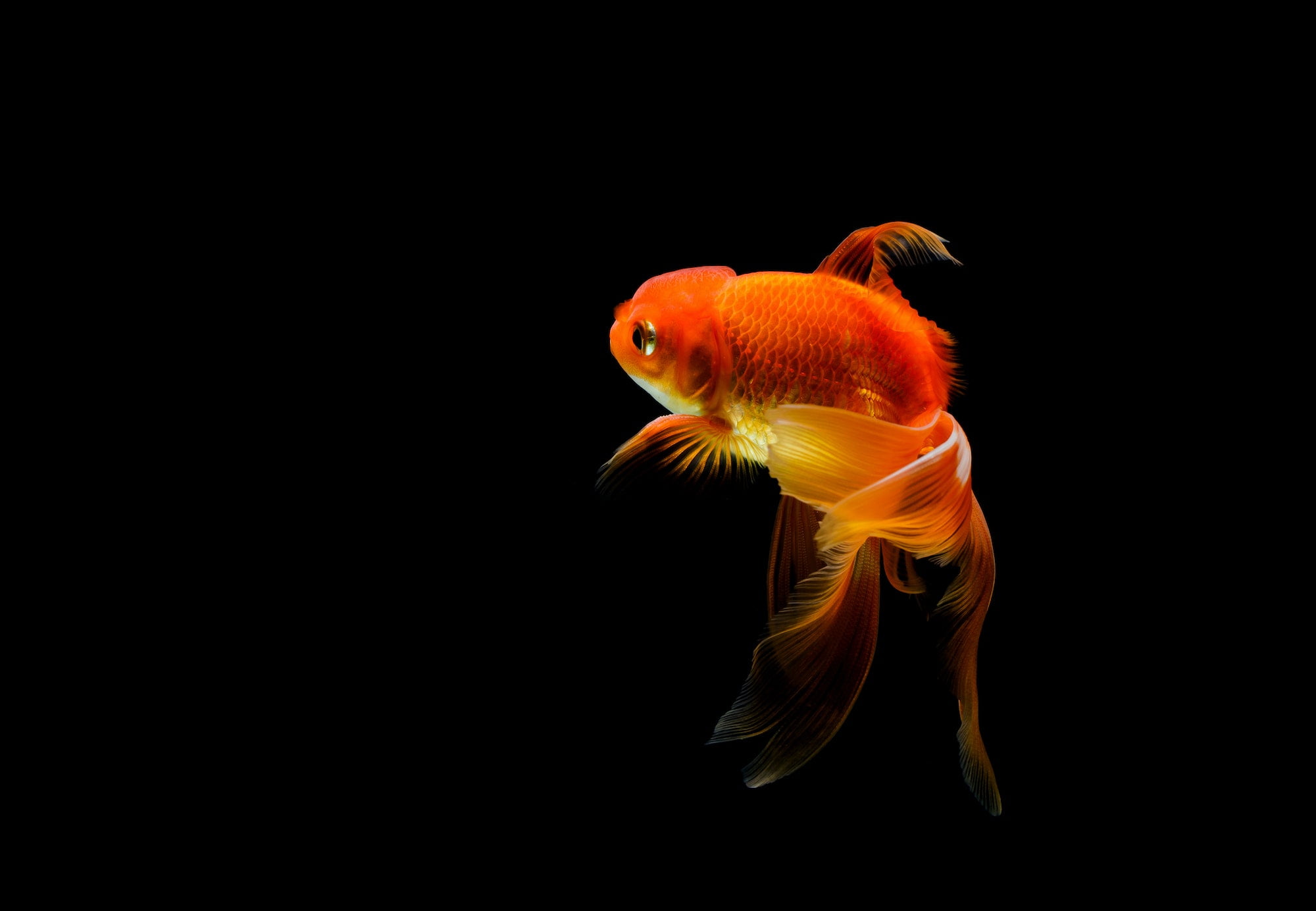
Leave a Reply